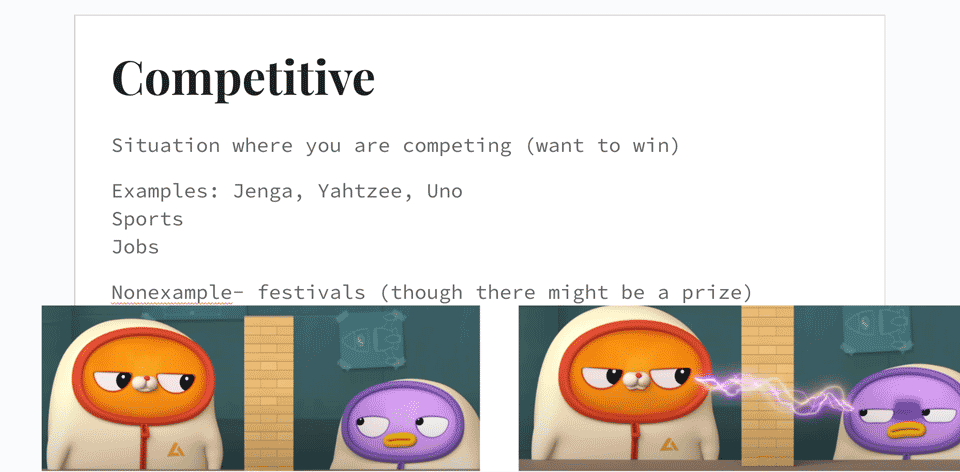Menu
-
- Home
-
About Us
-
The Approach
-
Focus Areas
-
MindWing Learning
-
Learning Resources
-
SHOP
-
Blog
-
- About MindWing
- Our People
- Contact Us
- Your Account
- Login
-
United States (USD $)

Tool Tuesday: Maca and Roni Video Series Provides Tons of Context for Narrative Teaching
by Sean Sweeney February 26, 2024 2 min read
Looking for narrative structure in varied places will yield you many TOOLs! This includes sources such as games, current events, interactive websites, and of course, videos. In this post I want to expand upon the great work of Dr. Anna Vagin, who several years ago co-presented a webinar with Maryellen Moreau on the power of using animations for social and language learning (Play..Pause...SGM, still available for free here).
A quote from this webinar resonates strongly: Jerome Bruner (1986, 1996) referred to narrative thinking as a capacity to “read other minds”; “to make accurate inferences about the motives and intentions of others based on their observable behavior and the social situations in which they act. Narrative thinking is the very process we use to understand the social life around us,” take perspective and to construct situation models.
![]()
 These teaching points apply to a series that Dr. Vagin has since championed, that of Maca and Roni, two lab “helpers” who often experience multiple kick-offs per video episode, the playlist to be found here. Dr. Vagin has also created a Super Social Learning Spreadsheet in which she details many categories of social concepts which can be targeted using the videos, with links.
These teaching points apply to a series that Dr. Vagin has since championed, that of Maca and Roni, two lab “helpers” who often experience multiple kick-offs per video episode, the playlist to be found here. Dr. Vagin has also created a Super Social Learning Spreadsheet in which she details many categories of social concepts which can be targeted using the videos, with links.
Recently, I have been using the Maca and Roni series in several different therapy contexts:
- With a high school student, we use the videos along with Story Grammar Marker® with lots of pausing to interpret body language, emotions, plans and other mental states, as well as the connections between physical actions of the characters and consequences they experience.
- Using Fry Gun, this student benefited from scaffolding to interpret that Maca and Roni’s plans changed. Initially, they wanted to ingest every fried food they could find, but then craved vegetables after a fry gun turned everything into a fried treat.
- From Jenga, we explored the more complex feeling word of competitive (linkable in the 6 Universal Feelings to angry) and used screenshots to analyze the body language that signaled this emotion.

- Maca and Roni also provide great opportunities to build situational schema around unfamiliar topics—for this student, social media was unfamiliar and we explored how people use it to share their stories in posts or tweets (maybe Xs now?), below from Dr. Albert’s Birthday:

- These stories also provide excellent contexts for scaffolding language about mental states and perspectives using the Critical Thinking Triangle®, this example from the clip Bon Voyage:

- Currently I have recommended these engaging and hilarious videos to a graduate student working with a first-grade client as a “clinical routine” to hone the students’ world schema and narrative interpretation, while she, as a clinician, is taking off with specific narrative teaching strategies.
I hope your “lab” is free of Maca-and-Roni-style, generally avoidable kick-offs this week!
Sean Sweeney
Sean Sweeney, MS, MEd, CCC-SLP, is a speech-language pathologist and technology specialist working in private practice at the Ely Center in Needham, MA, and as a clinical supervisor at Boston University. He consults to local and national organizations on technology integration in speech and language interventions. His blog, SpeechTechie (www.speechtechie.com), looks at technology “through a language lens.” Contact him at sean@speechtechie.com.
Leave a comment
Comments will be approved before showing up.
